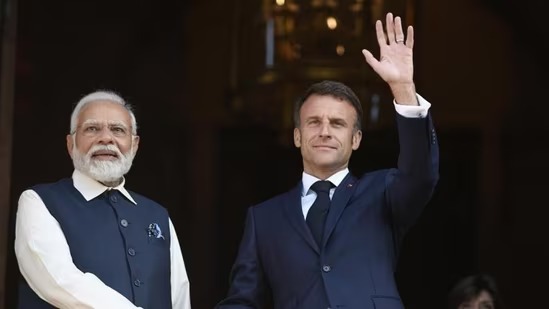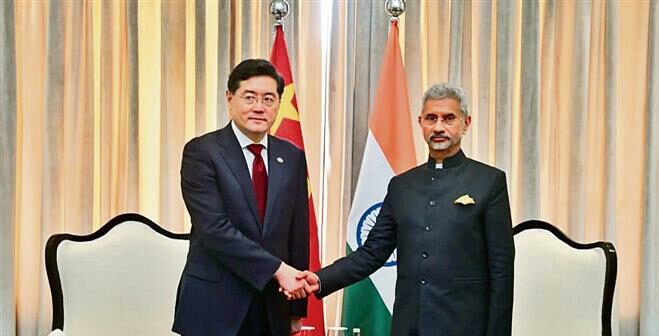The Future Trajectory of India’s Oldest Partnership
THE HINDUSTAN TIMES
APLN member Rakesh Sood writes about India’s Prime Minister Narendra Modi’s visit to France and the India-France strategic partnership. Read the original article here.
Published in Hindustan Times on July 21, 2023
Last week, as Prime Minister Narendra Modi witnessed the Bastille Day parade in Paris, where a contingent of Indian troops marched alongside their French counterparts to the strains of Sare jahan se achcha and the Indian Air Force (IAF) Rafales joined in the flypast, he had reason to look back with satisfaction at the 25-year-old India-France strategic partnership and feel confident about its future. The French connection has both deepened and broadened and reflects a reassuring stability in a world marked by increasing uncertainties and new rivalries.
Today, India has ‘strategic partnerships’ with over thirty countries but France was the first. As a country that prided itself on its ‘exceptionalism,’ France has been sympathetic to similar Indian claims based on its ancient civilisation. This is why both countries were quick to voice support for multi-polarity once the Cold War ended. French discomfort with United States (US)’s unipolar moment in the 1990s was evident when it described Washington DC as a ‘hyperpower’.
Defence cooperation had begun in the 1950s when India acquired the Ouragan aircraft and continued with the Mysteres, Jaguar (Anglo-French), Mirage 2000 as well as Alize and Alouette helicopters. Cooperation in the space sector has continued since the 1960s when the Centre National d’etudes Spatiales (CNES) helped ISRO set up the Sriharikota launch site, followed by liquid engine development and joint hosting of payloads. Today, it is a relationship of near equals and the two undertake joint missions.
The Cold War imposed limitations on the partnership. However, when the Cold War ended, France decided that its preferred partner in the Indian Ocean region would be India. In January 1998, President Jacques Chirac declared that India’s exclusion from the global nuclear order was an anomaly that needed to be rectified. After the nuclear tests in May 1998 when India declared itself a nuclear weapon state, France was the first major power to open a dialogue with India and displayed a far greater understanding of India’s security compulsions compared to other countries. It was the first P-5 country to support India’s claim for a permanent seat in an expanded and reformed UN Security Council.
The original three pillars of the strategic partnership were nuclear, space and defence; gradually, others were added – counter-terrorism and intelligence sharing, cybersecurity, tackling radicalisation in plural societies, maritime cooperation, addressing climate change, renewables and green energy resources, urban planning and developing public-private partnerships for urban infrastructure.
If this expansive agenda reflects the broadening of the partnership, four key documents issued – Joint Communique, List of Outcomes, India-France Indo-Pacific Roadmap, and the comprehensive Vision 2047, reflect the growing trust and deepening of the ties.
While the earlier defence purchases were straight acquisitions, the new focus has been on developing domestic capabilities. The agreement for six Scorpene submarines to be built at Mazagaon Docks Ltd was signed in 2005 with Naval Group (then DCNS). It was a 13-year project and suffered delays due to technology absorption hiccups and building domestic sourcing capacity. The first was commissioned in 2017 and the sixth will be commissioned early-2024. India has cleared the purchase of three more. The Vision Statement states that both sides “are ready to explore more ambitious projects to develop the Indian submarine fleet.” India has a target of deploying 6 nuclear-powered SSNs by 2030 and this is a potentially significant area for cooperation.
Similarly, the agreement for acquiring 36 Rafale aircraft concluded in 2016 carried a requirement of 50% offsets amounting to ₹ 28000 crores. A new agreement for 26 Rafale Marine for the aircraft carrier is under discussion with additional offsets. On the civilian side, Indigo and Air India have signed up for 750 Airbus aircraft and Airbus is expanding its network of Indian OEMs as well as considering establishing maintenance, repair and overhaul (MRO) facilities. Both countries are developing a Roadmap for Defence Industrial Cooperation to strengthen the defence pillar.
In 2018, the two countries had agreed on a Joint Strategic Vision of India-France Cooperation in the Indian Ocean Region that has now been extended to the Pacific with the new Indo-Pacific Roadmap in view of its growing salience. Unlike other European countries, France with its overseas territories of Reunion island, New Caledonia and French Polynesia, is a resident power in the region. The new Roadmap is broader and covers preservation of marine biodiversity, sustainable development of maritime resources, deploying renewables like solar in the region, helping small island states develop resilient infrastructure and establishing an Indo-French Health Campus.
Bilateral economic ties people-to-people are two aspects of the relationship that have been lagging. With annual trade of $ 15 billion, France is our fifth largest trading partner in the EU. Though nearly 1000 French companies have a presence in India, French foreign direct investment (FDI) is estimated to be $10 billion. There is an opening though. In the past, Indian companies saw United Kingdom (UK) as the entry point to Europe; now with Brexit, France can position itself as India’s entry point for Europe and Francophonie. Opening an Indian consulate in Marseille and a French office in Hyderabad will help, together with more direct flights.
The most significant development at the people-to-people level is the growth in number of Indian students and their new-found ability to get two-year work visas after their education. The target of 10000 students a year by 2025 has been met and now for postgraduate students, the visa has also been extended to five years.
One of India’s oldest relationships must now train its eyes on the next 25 years.
Image: French President Emmanuel Macron and India’s Prime Minister Narendra Modi during their meeting in Paris. (AFP picture)




